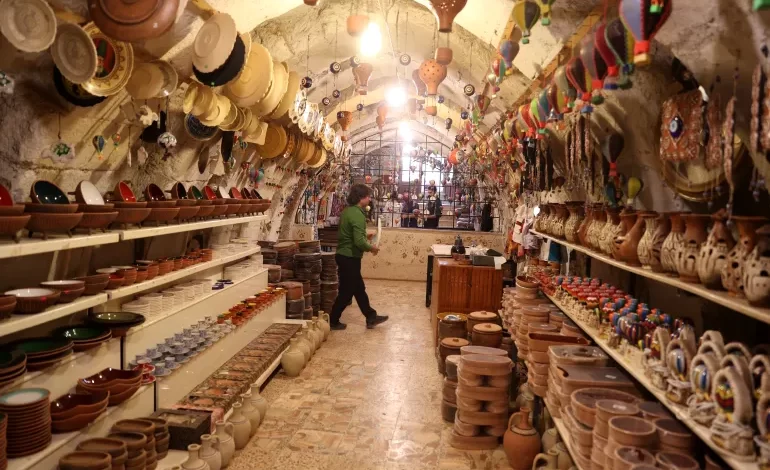Ceramics Industry before 750 years in central Türkiye

Agencies – Sudan Events
Turkish Shaaban Topuz continues to work in a 750-year-old pottery-making workshop, in his profession that he inherited from his grandfather in the Avanos region, which is famous for hosting handicrafts in the state of Nevsehir in central Turkey.
Topuz (50 years old) began working with clay at the age of eight in the workshop that bears his grandfather’s name. The famous pottery maker in the region still continues the profession that he inherited from his ancestors, and displays his artistic works in the historical place.
The workshop, which has an enclosed area of about 1,000 square metres, consists of a curved structure resembling an ancient palace, in addition to cellars carved into the rock. The workshop provides tourists with the possibility of following the production process while touring the workshop and its rooms filled with products. In his traditional workshop, Topuz produces models of porcelain and pottery products that are It was used in ancient civilizations that lived on the soil of Anatolia.
Topuz says that he has been shaping clay since he was a child in primary school, and that he is “excited” to continue his craft in this historic building that has embraced the craft of pottery making for centuries. “I worked as an apprentice and professional worker for approximately 21 years in this traditional workshop, before I became a partner in it starting in 2002. He added, “This is a workshop that has embraced the profession of pottery making for 750 years until today. Over these many years, I have used a pottery workshop.”
Topuz points out, “The history of pottery making in Avanos extends back about 5,000 years. Nowadays, we make different shapes by using new techniques.”
As for the workshop itself, Topuz says, “Some places in the workshop are natural rock sculptures, and others are man-made. There are rooms in which we display our products made with traditional means.”
He points out that “no modifications or restorations were made to the sections of the workshop and the basements to avoid harming the historical and natural fabric therein.



